Travel The Puerto Rican Timeline
History and culture are the lifeblood of Puerto Rico. Any history or art buff will find plenty of great adventures to knock off their bucket list when they travel here. Distinctly American and Caribbean in identity, Puerto Rico has a rich history dating back to before the arrival of Christopher Columbus. This is when the Taino people thrived here. Landmarks throughout the island act as a living timeline. Marking important moments in North American and Caribbean history. Following the Puerto Rican timeline makes for a great vacation adventure.
Before we move on, did you know that every week we send out a newsletter featuring:
- New Destinations on the Tripio app
- Highlighted Itineraries on the Tripio app
- 3 Articles from the Tripio blog
Subscribe to Tripio’s Weekly Newsletter!
There are many ways to follow the Puerto Rican timeline, but here is one way to do it:
Experience Taino Culture at the Caguana Ceremonial Indigenous Heritage Center
The Taino people are regarded as the first inhabitants of the island we now call Puerto Rico. They maintained a complex and relatively advanced civilization that stretched across the island and the Caribbean. Including places such as Cuba, the Dominican Republic, and beyond. There are fierce debates about what makes Taino culture so distinct. Moreover, it is now believed to have blended with African and Spanish cultures. Some believe what was once the historic Taino culture can’t be identified with current Taino culture.
Perhaps the best place on the island to witness authentic Taino culture is at the Caguana Ceremonial Indigenous Heritage Center in Utuado. Dating back to the late prehistoric period, the site has been preserved by the Institute of Puerto Rican Culture for the enjoyment of visitors.
Discover Taino Culture
Simply travel the path to the visitor center and museum. Here you will encounter the first of many petroglyphs, or the rock carvings of the Taino people, on display. After paying a small fee and receiving your brochure, you’re free to head outside to the grass fields and ceremonial plazas. Additionally, you can explore the rest of the museum and see some of the great artifacts on display.
10 plazas and 21 petroglyphs await you outside. It’s believed the plazas were used for ceremonies, especially the largest, central plaza. The smaller, horseshoe-shaped plaza next to it is believed to have been a dance area. While the other, even smaller plazas might have been the spot where the Taino people played the game of batos.
If you’re especially interested in Taino or Native history, Tripio also suggests stopping by the Cuartel de Ballajá in San Juan, which is home to an entire museum of North American history, including an exhibit on Native American cultures. Let’s continue along the Puerto Rican timeline.
Genesis of the New World: Raices Fountain and Birth of the New World
Christopher Columbus arrived in the Bahamas in 1492. His subsequent interaction with the Lucayan Taino people there, is believed to be the first recorded instance of a European explorer reaching the New World. It wasn’t until his second voyage in 1493 that Columbus would arrive in Puerto Rico. By then his forays into the Caribbean had already made a big impact on what would later become known as the New World.
You can get a glimpse into what Columbus’ first voyage might’ve looked like at the sculpture entitled Birth of the New World. Located in Arecibo, the sculpture was completed in 2016. It is now considered the tallest in North America. Depicting Columbus as he commands the three ships from his first adventure: the Nina, Pinta, and the Santa Maria. While the sculpture is difficult to reach by foot, there are plenty of spots nearby to photograph it.
The Raices Fountain in Old San Juan is also a great stop. Built in 1992 to commemorate the discovery of the New World, the fountain features statues that honor the island’s mixed African, Spanish, and Taino heritage. At sunset, the fountain is also one of the most picturesque spots in San Juan. Next up on the Puerto Rican timeline is colonization and conflict.
Puerto Rican Timeline: Colonization and Conflict: Castillo San Felipe del Morro
Columbus’ discovery of the New World set off a rat race between the nations of the Old World for land. The Spanish were the first to settle in Puerto Rico. However, they would face a handful of challengers over the years, including the British, Dutch, and pirates.
The Spanish government on the island sponsored the construction of several forts in their main settlement in San Juan, beginning in 1533. El Morro was the second fort built on the islet of what is now Old San Juan, with construction commencing in 1539 and “completed” in 1790. By “completed,” I mean the fort was upgraded countless times over those two-and-a-half centuries. Transforming from a simple promontory mounted with a single cannon to a six-level fortress, whose very appearance was enough to frighten any would-be attackers away.
Working in concert with the El Canuelo fortress across the bay, the crossfire from both forts essentially locked down the entrance to San Juan. Think the Seattle Seahawks defense from 2013, only instead of being intercepted by Richard Sherman…your entire fleet could be sunk.
Sports metaphors aside, El Morro served as a key strategic base throughout Spain’s occupation of the island. All the way to the Spanish-American war in 1898, when the United States would take control of the now legendary fort. It served as a defensive fort throughout both World Wars and into the Cold War period, before being formally retired in 1961.
Today, El Morro serves as one of the most iconic landmarks of Puerto Rico, and a living time capsule of the chaos of the colonial era. Following along the Puerto Rican timeline.
Puerto Rican Timeline: Spanish Occupation: Casa del Rey and Casa de Espana
Thanks to El Morro and fortifications around the island, Puerto Rico remained firmly in Spanish hands until the Spanish American War in 1898. In that time, Spanish culture flourished on the island, evident by the amount of Spanish landmarks and architecture on the Enchanted Island. Casa del Rey and Casa de Espana are two such places that have preserved what life looked like on the island during Spain’s reign (no rhyme intended).
Literally translating to “The King’s House,” living or even spending time in Casa del Rey makes one feel important. It’s the oldest building in the town of Dorado, and served the Spanish government and regional military (Romantic period writer Manuel Alonso y Pachecho also lived here). The home’s extensive gardens capture the opulence of Spanish life at the time. This also makes for some great Instagram-worthy photography in the present.
The design of Casa de Espana, which translates to “House of Spain,” was inspired by Moorish Spanish architecture, with lofty towers and colorful tiles. It served as the Spanish Embassy, but today is home to the island’s Spanish Cultural Center.
Becoming an American Territory: Walkway of the Presidents
Following the Spanish-American War in 1898, control of Puerto Rico was turned over to the United States. It officially became an unincorporated territorial possession of the United States in the same year. Residents of the island were designated U.S citizens beginning in 1917. There have been several movements over the past century to grant statehood to the island. However, today it still remains a territory of the United States (Hawaii is a 5+ hour flight from California, while a flight to San Juan from Miami is about 2 ½ hours, so I think Puerto Rico may have a point).
Though it may not be an official state, Puerto Rico still has an important place in the past, present, and future of the United States. This importance is best demonstrated by how many presidents have visited Puerto Rico since 1898. This you can see for yourself at the Walkway of the Presidents in San Juan. Gerald R. Ford, John F. Kennedy, Dwight D. Eisenhower, Harry S. Truman, Franklin D. Roosevelt, Herbert Hoover, Theodore Roosevelt and Barack Obama are all depicted in statue form on the walk. Moreover, each one comes with a plaque describing the circumstances of their visit, from vacations to speeches.
Finishing Off Our Puerto Rican Timeline: The Gilded Age: Museo Castillo Serrales
Ah, the Gilded Age: big money, new innovations, and F. Scott Fitzgerald. Many prominent families made their home in Puerto Rico, bringing the class and opulence of the Roaring Twenties with them.
One way to take a trip back to this time is at the Museo Castillo Serrales. The Serrales family, behind the creation of DonQ rum, resided in this opulent residence in the 1930’s. It features a preserved butterfly nursery, Vigia Cross, and a Japanese garden with koi ponds and pagodas.
How well did the other half live in Puerto Rico? Pretty darn well, from the looks of it.
Use the Tripio App to Make Your Own Timeline
History is as big a part of Puerto Rico as mofongo and beautiful beaches. It’s everywhere from grains of sand to the bricks in the many forts in Old San Juan. The timeline mentioned above is only a glimpse into Puerto Rico’s long and storied past. The best way to see more of it is with the Tripio app.
Using the app, select the plus icon at the bottom of the screen titled “Create.” This will take you to the trip creator, which can create custom top 10 lists and a custom itinerary in under 60 seconds! Make sure to give History and Culture a 5 for trip importance, to ensure your custom top 10 has a focus on places of cultural significance. If you’re looking for a beach to unwind after a day of exploring, add Easy Adventure to your custom itinerary, and Good Eats for when you get hungry!
Craving for more of Puerto Rico then check out our blog on : Puerto Rico In Four Beaches
-Joshua Faulks, Tripio Guru
Download the free Tripio app on iOS and Android!


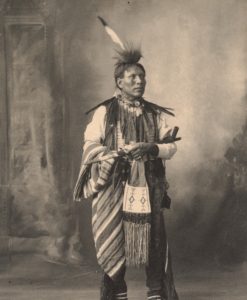
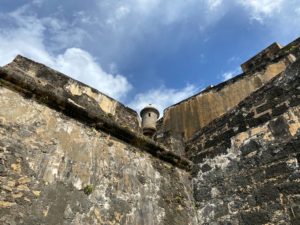
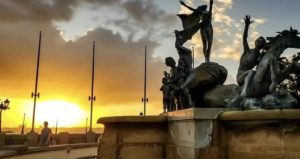



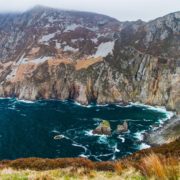
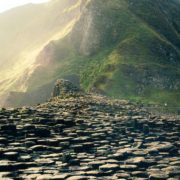
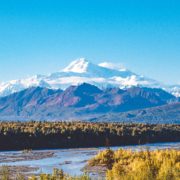
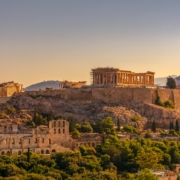
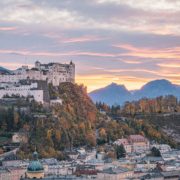




Trackbacks & Pingbacks
… [Trackback]
[…] Find More here to that Topic: blog.tripioapp.com/travel-the-puerto-rican-timeline/ […]
… [Trackback]
[…] Find More to that Topic: blog.tripioapp.com/travel-the-puerto-rican-timeline/ […]
… [Trackback]
[…] Find More on to that Topic: blog.tripioapp.com/travel-the-puerto-rican-timeline/ […]
… [Trackback]
[…] Read More Information here on that Topic: blog.tripioapp.com/travel-the-puerto-rican-timeline/ […]
Leave a Reply
Want to join the discussion?Feel free to contribute!